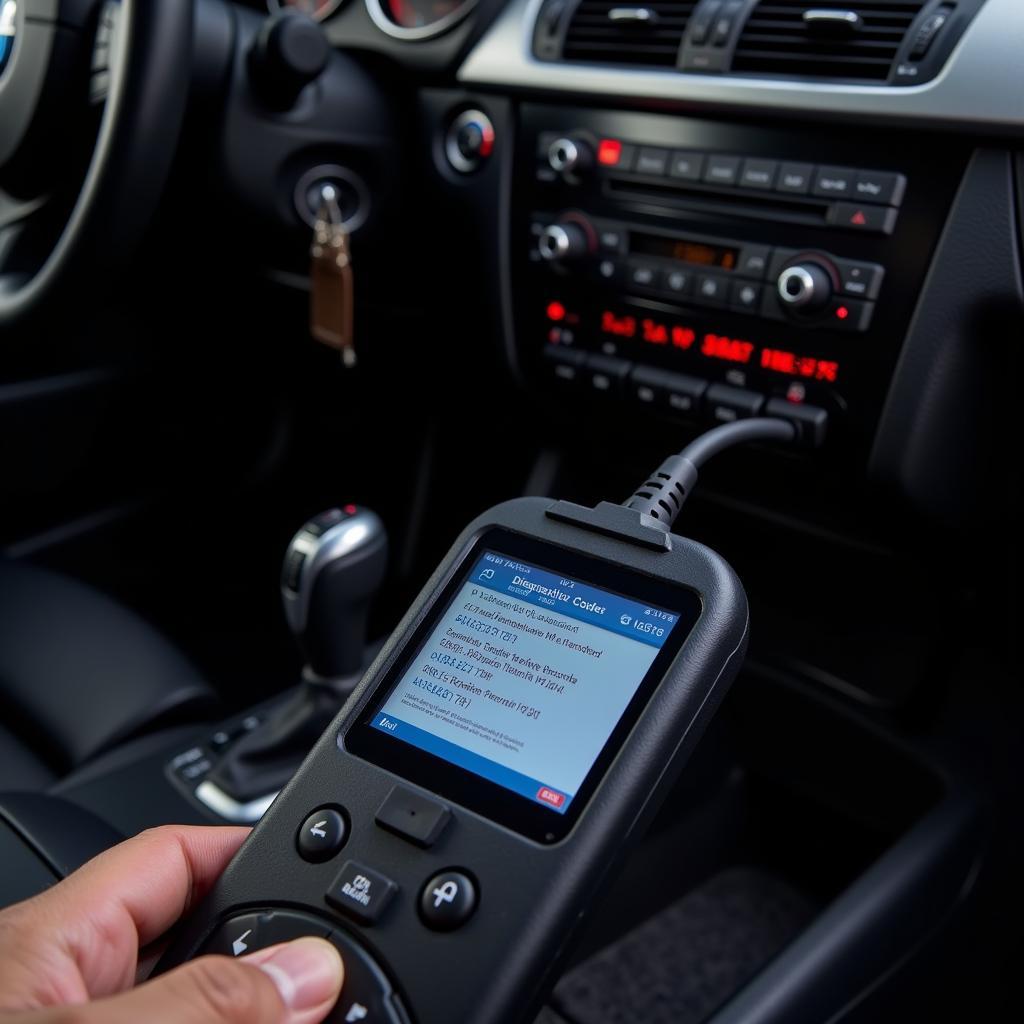The Ford brake pressure warning switch is a critical safety component that alerts you to potential problems within your braking system. A malfunctioning switch can lead to unnecessary worry, or worse, mask a genuine issue that requires immediate attention. This comprehensive guide explores everything you need to know about the Ford brake pressure warning switch, from understanding its function to diagnosing and resolving common issues.
As a reminder, if you are uncomfortable working on your vehicle’s brakes, consult a qualified mechanic. Brakes are a critical safety system, and improper repairs can have serious consequences. You can check resources like the 1969 Ford Thunderbird brake pressure warning switch for specific model information.
Understanding the Ford Brake Pressure Warning Switch
The brake pressure warning switch is a simple yet vital component located within your Ford’s braking system. Its primary function is to monitor the hydraulic pressure within the brake lines. If the pressure drops below a certain threshold, the switch activates, illuminating the brake warning light on your dashboard. This light serves as an immediate indicator of a potential brake problem, such as low brake fluid, a leak in the brake lines, or a malfunctioning master cylinder.
Understanding how this small but crucial component works can empower you to address potential brake issues proactively. While a lit brake warning light can be alarming, it doesn’t always indicate a catastrophic failure. It simply signals the need for further investigation.
Common Causes of Brake Pressure Warning Light Illumination
Several factors can trigger the brake pressure warning light. One of the most common culprits is low brake fluid. Over time, brake pads wear down, and the brake fluid level naturally decreases. A leak in the brake lines or a faulty master cylinder can also lead to a drop in brake fluid and trigger the warning light. Sometimes, the issue might be as simple as a faulty brake pressure warning switch itself.
It’s also worth noting that the warning light can sometimes flicker intermittently. This can be due to a loose connection, a worn-out switch, or even a problem with the wiring. If you experience a flickering brake warning light, it’s crucial to address the issue promptly to prevent further complications. You can explore more about this issue by reading about brake warning light flickering.
Diagnosing a Faulty Ford Brake Pressure Warning Switch
If you suspect a problem with your Ford brake pressure warning switch, a few simple diagnostic steps can help pinpoint the issue. Begin by checking the brake fluid level. If the fluid is low, top it off and see if the warning light goes off. If the light remains on, you can try testing the switch itself using a multimeter. This involves disconnecting the electrical connector from the switch and checking for continuity between the terminals. A faulty switch will typically show no continuity. For more information on brake fluid warnings, see the VW Passat brake fluid warning.
Remember, diagnosing and repairing brake systems can be complex. If you’re unsure about any step, it’s always best to consult a qualified mechanic. Your safety is paramount, and professional assistance can ensure the problem is resolved correctly.
Replacing the Ford Brake Pressure Warning Switch
Replacing the brake pressure warning switch is a relatively straightforward procedure. Once you have confirmed the problem with the help of proper Ford brake warning lights diagnostics, the next step is replacement. First, locate the switch, usually mounted near the master cylinder. Disconnect the electrical connector and then use a wrench to remove the switch from its fitting. Install the new switch, ensuring it’s tightened securely. Reconnect the electrical connector and then bleed the brakes to remove any air that may have entered the system. For issues related to persistent brake light warnings, you can refer to the 1997 Nissan Altima dash brake light warning won’t go off article.
Conclusion
The Ford brake pressure warning switch plays a crucial role in maintaining the safety and reliability of your vehicle’s braking system. By understanding its function and knowing how to diagnose and resolve common issues, you can keep your Ford running smoothly and ensure your safety on the road. For further information regarding specific Ford models, such as the Crown Vic, you can consult the Crown Vic brake warning light guide. Remember, if you are ever in doubt, consulting a qualified mechanic is always the best course of action.
FAQs
-
What does the Ford brake pressure warning light mean? The light indicates a potential problem with your braking system, such as low brake fluid, a leak, or a faulty switch.
-
Can I drive with the brake pressure warning light on? It’s not recommended. Driving with a potential brake issue can be dangerous.
-
How do I reset the Ford brake pressure warning light? The light should reset automatically once the underlying issue is resolved.
-
How much does it cost to replace a Ford brake pressure warning switch? The cost varies depending on the model and labor rates but is typically a relatively inexpensive repair.
-
Where is the Ford brake pressure warning switch located? It’s usually mounted near the master cylinder.
-
How often should I check my brake fluid level? It’s a good idea to check your brake fluid level at least once a month.
-
Can I replace the brake pressure warning switch myself? It’s a relatively simple procedure, but if you’re unsure, consult a mechanic.

